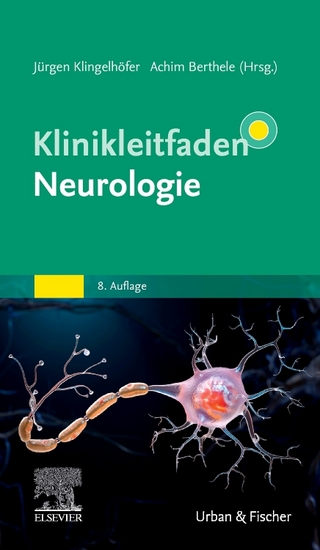
Neuromuscular Disease
Cambridge University Press (Verlag)
978-0-521-17185-4 (ISBN)
- Titel erscheint in neuer Auflage
- Artikel merken
There are over 600 neuromuscular disorders and the variability of these syndromes can leave clinicians feeling as if they are lost in a maze as they seek to diagnose and manage patients. This book addresses this problem by using the case-history and symptom manifestation as a starting point for the diagnostic process in adult patients, mimicking the situation in the consultation room. For each case, diagnostic tools, disease pathogenesis, prognosis and treatment options are discussed, along with rare manifestations and differential diagnoses. Symptoms, signs and syndromes are cross-linked to help the reader navigate the variety of disorders. Accompanying tables give a broader picture of the manifestations of a particular disease within the landscape of neuromuscular disorders. This highly-illustrated book, with accompanying videos, will aid neurologists at all levels, internists, geneticists, rehabilitation physicians and researchers in the field, as they seek to familiarize themselves with this complex range of disorders.
John H. J. Wokke is Professor of Neurology and Head of the Neurology Residency Program, Department of Neurology and Neurosurgery, University Medical Center Utrecht, The Netherlands. Pieter A. van Doorn is Professor of Neurology, Department of Neurology, Erasmus MC, University Medical Center Rotterdam, The Netherlands. Jessica E. Hoogendijk is a neurologist in the Department of Neurology, University Medical Center Utrecht, The Netherlands. Marianne de Visser is Professor of Neuromuscular Disorders, Department of Neurology, Academic Medical Center, Amsterdam, The Netherlands.
Preface; Abbreviations; Introduction: approach to the patient; Part I. Motor Neurone Diseases: Case 1. Classical amyotrophic lateral sclerosis; Case 2. ALS with frontotemporal dementia; Case 3. Primary lateral sclerosis; Case 4. Progressive muscular atrophy; Case 5. Kennedy disease; Case 6. Spinal muscular atrophy type III, Kugelberg-Welander disease; Case 7. Post-polio syndrome; Case 8. Spinal dural fistula; Part II. Neuropathies: Case 9. Charcot-Marie-Tooth disease type 1A; Case 10. Hereditary neuropathy with liability to pressure palsy; Case 11. Charcot-Marie-Tooth disease type 2A, mitofusinopathy; Case 12. X-linked Charcot-Marie-Tooth disease; Case 13. Hereditary sensory and autonomic neuropathy type 4; Case 14. Guillain-Barré syndrome; Case 15. Miller-Fisher syndrome; Case 16. Chronic inflammatory demyelinating polyneuropathy; Case 17. Multifocal motor neuropathy; Case 18. Peripheral nerve hyperexcitability syndrome, Morvan's syndrome; Case 19. Vasculitic neuropathy; Case 20. Neuropathy and ataxia caused by IgM gammopathy; Case 21. Polyneuropathy, organomegaly, endocrinopathy, M-protein and skin changes; Case 22. Subacute sensory paraneoplastic neuropathy and ganglionopathy; Case 23. Neurolymphomatosis; Case 24. Diabetic neuropathy; Case 25. Alcohol neuropathy; Case 26. HIV neuropathy; Case 27. Lyme radiculoneuritis; Case 28. Lepromatous neuropathy; Case 29. Toxic iatrogenic neuropathy; Case 30. Idiopathic neuralgic amyotrophy; Case 31. Small nerve fibre neuropathy; Case 32. Critical illness polyneuropathy; Case 33. Chronic idiopathic axonal polyneuropathy; Part III. Neuromuscular Junction Disorders: Case 34. Classic myasthenia gravis; Case 35. Myasthenia gravis with autoantibodies to MuSK; Case 36. Lambert-Eaton myasthenic syndrome; Case 37. Congenital myasthenic syndrome: slow channel syndrome; Part IV. Myopathies: Case 38. Becker muscular dystrophy; Case 39. Caveolinopathy, including limb girdle muscular dystrophy type 1C; Case 40. Limb girdle muscular dystrophy type 2A, calpainopathy; Case 41. Limb girdle muscular dystrophy type 2I, fukutin-related protein deficiency; Case 42. Emery-Dreifuss muscular dystrophy; Case 43. Facio-scapulo-humeral dystrophy; Case 44. Miyoshi myopathy, dysferlinopathy, limb girdle muscular dystrophy type 2B; Case 45. Distal myopathy with rimmed vacuoles, hereditary inclusion body myopathy; Case 46. Oculopharyngeal muscular dystrophy; Case 47. A woman with a family history of muscle weakness and severe cardiac complaints, desminopathy; Case 48. Late-onset congenital myopathy caused by a mutation in the RYR1 gene, central core disease; Case 49. Bethlem myopathy; Case 50. Myotonic dystrophy type 1, Curschmann-Steinert disease; Case 51. Myotonic dystrophy type 2, proximal myotonic myopathy; Case 52. Becker myotonia, chloride channelopathy; Case 53. Glycogen storage disease type 2, Pompe disease; Case 54. Glycogen storage disease type 5, McArdle disease; Case 55. Mitochondrial disease: progressive ophthalmoplegia; Case 56. Myositis; Case 57. Sporadic inclusion body myositis; Case 58. Sarcoid myopathy; Case 59. Hypothyroid myopathy; Video legends; Index.
| Erscheint lt. Verlag | 7.3.2013 |
|---|---|
| Zusatzinfo | 58 Tables, black and white; 57 Halftones, unspecified; 123 Halftones, color; 12 Line drawings, unspecified; 9 Line drawings, color |
| Verlagsort | Cambridge |
| Sprache | englisch |
| Maße | 189 x 246 mm |
| Gewicht | 510 g |
| Themenwelt | Medizin / Pharmazie ► Medizinische Fachgebiete ► Neurologie |
| Medizin / Pharmazie ► Medizinische Fachgebiete ► Orthopädie | |
| ISBN-10 | 0-521-17185-7 / 0521171857 |
| ISBN-13 | 978-0-521-17185-4 / 9780521171854 |
| Zustand | Neuware |
| Informationen gemäß Produktsicherheitsverordnung (GPSR) | |
| Haben Sie eine Frage zum Produkt? |
aus dem Bereich



